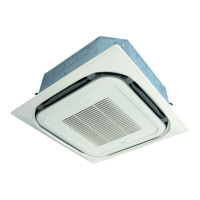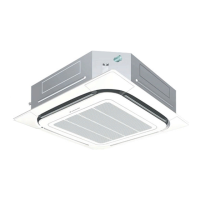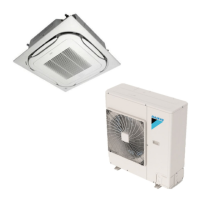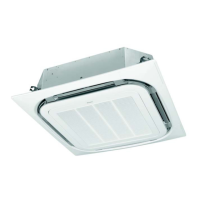What to do if Daikin Air Conditioner detects multiple master units?
- AAnthony CarrollAug 9, 2025
If your Daikin Air Conditioner detects multiple master units, connect the remote controller to only one indoor unit.
What to do if Daikin Air Conditioner detects multiple master units?
If your Daikin Air Conditioner detects multiple master units, connect the remote controller to only one indoor unit.
What to do if Daikin FCQG125FVEB Air Conditioner has gas shortage due to clogging in refrigerant piping?
If you suspect clogging in the refrigerant piping system of your Daikin Air Conditioner, check for a failure to open the stop valve and any clogging within the refrigerant system.
What does excess indoor units connected error mean on Daikin FCQG125FVEB?
This error will be displayed if five or more indoor units are connected to your Daikin Air Conditioner.
Why does my Daikin Heat Pump emit an odor?
If your Daikin Heat Pump emits an odor, it's likely due to room smells and cigarette odors that have accumulated inside the indoor unit. To resolve this, the inside of the indoor unit must be cleaned.
Records changes and updates made to the service manual over time.
Crucial safety warnings and precautions for repair and user operations.
Lists all available indoor and outdoor unit model names and their configurations.
Visual overview of the different outdoor unit models available for the series.
Defines the operational temperature and humidity limits for cooling and heating modes.
Information on wired remote controllers, including applicable models and their functions.
Information on wireless remote controllers, including applicable models and their functions.
Procedures for accessing and using the service mode on the remote controllers for diagnostics.
Procedures for using the inspection mode on the remote controllers for system checks.
Specific safety guidelines for personnel involved in repair and maintenance procedures.
Safety precautions for end-users to ensure safe operation and prevent hazards.
Describes the purpose and location of key components and thermistors in the system.
Visual representation of the system's operational logic during cooling, heating, and emergency modes.
In-depth explanation of specific operational functions like thermostat control and fan speed settings.
Procedures for conducting operational tests after installation to ensure proper function.
Instructions for adjusting system settings using the wired and wireless remote controllers.
Details on adjusting settings directly on the outdoor unit's PCB using DIP switches and buttons.
Methods for operating the unit in emergency situations or when the remote controller is unavailable.
Procedures and guidelines for performing regular maintenance checks on the unit.
A guide to diagnosing problems based on observed symptoms and their likely causes.
Diagnosing issues by interpreting the status of LEDs on the indoor and outdoor unit PCBs.
Procedures for diagnosing faults and errors using the remote controller's self-diagnosis function.
Detailed steps for checking thermistor resistance and comparing values against specifications.
Schematic diagrams illustrating the refrigerant piping layout of the system.
Electrical wiring diagrams for the outdoor unit components.
Data table showing the thermodynamic properties of R-410A refrigerant.
Step-by-step instructions on how to safely remove and reinstall the switchbox.
| Type | Ceiling Cassette |
|---|---|
| Cooling Capacity | 12.5 kW |
| Heating Capacity | 14.0 kW |
| Series | SkyAir |
| Power Supply | 50Hz |
| Refrigerant | R410A |











